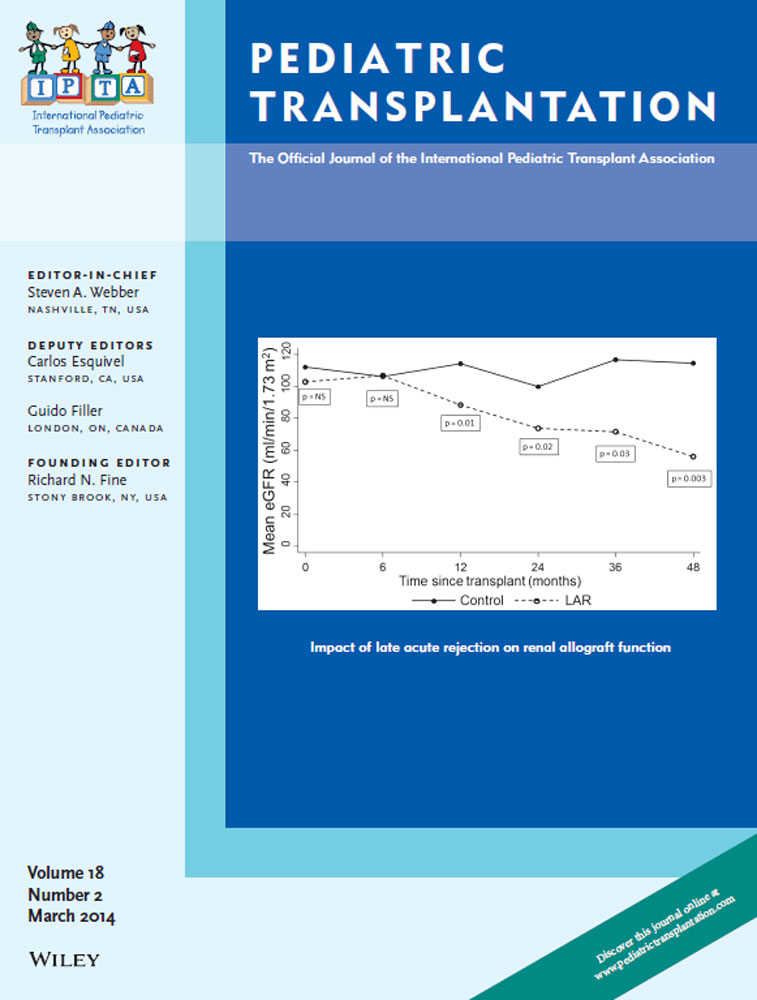Is single-port laparoscopy feasible after liver transplant?
Abstract
The role of laparoscopy following liver transplant in children is debated. Herein, we report the first two cases of SIPES post-liver transplant. In both patients, SIPES access was carried out using Olympus TriPort. Patient 1 was an 11 yr old born with biliary atresia, who had four previous major laparotomies: Kasai portoenterostomy, followed by liver transplant and two laparotomies for lymph node biopsies for PTLD. The child was referred for suspected PTLD relapse due to enlarged nodes on CT scan. At SIPES, following adequate adhesiolysis, the lymph node biopsy was achieved successfully. Patient 2 was a five yr old with bilateral intra-abdominal testes who had undergone liver transplant aged two yr. He underwent a left one-stage orchidopexy and right first-stage Fowler–Stephen procedure at five yr of life, followed by a second stage Fowler–Stephen surgery on the right side, nine months later. All procedures were successfully performed by SIPES, and both patients were discharged home on first post-operative day. We conclude that SIPES could be safely carried out in patients who have had liver transplant. In case of diffuse intraperitoneal adhesions, SIPES is beneficial to create space by blunt and sharp dissection and decreases post-operative stay.




